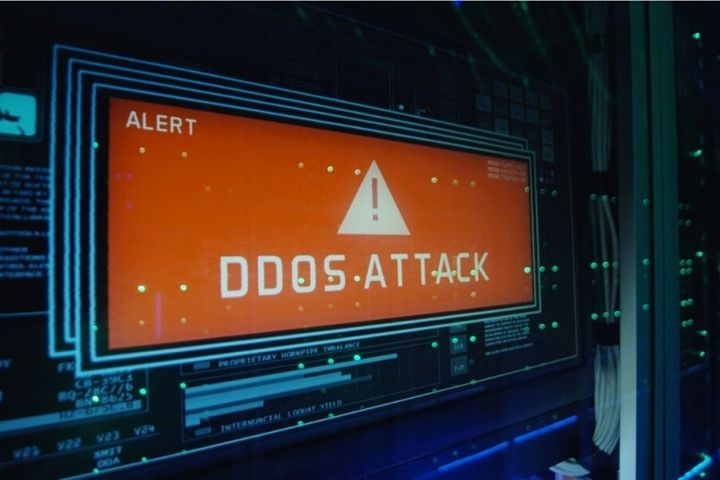DDoS Attacks Continue to Be a Bigger Threat Than Ever

DDoS attacks have been part of the cyber security landscape for years – but they’re showing no sign of abating. In fact, they’re actually getting a whole lot worse. For those without the right advanced DDoS protection, the results can be devastating.
A DDoS attack, for those thankfully unfamiliar with them, stands for Distributed Denial of Service. DDoS attacks take place when a bad actor utilizes resources that come more from multiple remote sources and locations in order to attack the online operations of a particular target.
Just like a social engineering attack works by exploiting weaknesses in human behavior, so too does a DDoS attack take advantage of a different kind of vulnerability: the way that network services function.
Table of Contents
Rough Guide To DDoS Attacks
In essence, the goal of a DDoS attack is to harness massive amounts of fraudulent traffic coming from different places and to have it converge on a certain point with the goal of knocking a website or online service offline – or slowing it down to the point where it’s unable to function properly.
As an analogy, imagine that a group of malicious pranksters decided to repeatedly phone you over and over, rendering you unable to make calls as normal.
The chief difference? That while such a group of pranksters would likely be no more than a handful of people, the number of devices in a “botnet” (a network of devices or computers that have been infected with malware that allows them to be remote controlled without the knowledge of their rightful owners) can be made up of thousands or even millions of participants. That can result in a massive tidal wave of traffic that’s potentially capable of bringing down even the largest of targets.
The prevalence of DDoS attacks continues to increase at an alarming rate – including their quantity (the total number of attacks), their size (the amount of traffic involved in a particular attack) and their complexity. There are many reasons why this might be the case.
DDoS Keeps On Growing
One is the growth of Internet of Things (IoT) devices, which frequently make up a large number of the devices in modern botnets. A growing number of major attacks utilize IoT devices for their attack methodology, since IoT devices frequently boast security weaknesses which make them comparatively easy for bad actors to hack and seize control of.
Another explanation in the increased number of DDoS attacks is the lower barrier to entry for launching such attacks. Thanks to DDoS for hire services, it’s now possible for users to rent a botnet for as little as a few dollars up to a few hundred dollars at a time. This can then be used to target would-be victims, even if the person paying for such a service does not have the requisite technical skills to carry it out themselves.
As with many cyber attacks, which are increasing across the board, another reason for the growing prevalence of DDoS is, simply, that attackers know that it’s more likely than ever to cause problems. Especially coming out of a global pandemic, the world is reliant more than ever on connected services for everything from our shopping to our entertainment to our work. An attack that knocks one of these pillars of our lives offline is therefore going to be extremely damaging – and incredibly costly for the company that has to deal with the after-effects of an attack.
So feared are DDoS attacks for this reason that, recently, they have been adopted by ransomware attackers who threaten DDoS attacks in the event that ransoms are not paid. It’s an extortion attempt that works only because of how damaging targets know that DDoS can be.
Unsurprisingly, the increase in DDoS attacks has led to evolution in the form these attacks take. For instance, “low and slow” DDoS attacks – also referred to as slow rate attacks – try to more seamlessly blend in among regular traffic by targeting server resources and applications with slow rates of traffic, rather than massive spikes. While less dramatic than some other DDoS attacks, low and slow attacks can nonetheless exhaust resources and yield the same results.
Defending Against The Threat
In order to defend against the kinds of attacks mentioned here, organizations must make use of state-of-the-art DDoS mitigation solutions that are able to detect and block everything from all-guns-blazing major DDoS assaults to the more subtle low and slow variations. Fortunately, the tools exist to do exactly that. Tools such as Web Application Firewalls (WAFs) and DNS (Domain Name Servers) protection can help to identify and block malicious traffic, while allowing legitimate traffic through to its target destination. Meanwhile, traffic scrubbing centers can be used for helping absorb large-scale DDoS attacks.
DDoS attacks are here to stay – and becoming more of a challenge all the time. But by employing the right countermeasures, would-be targets can safeguard against them. It’s one of the best investments you can make in today’s cyber security environment.






